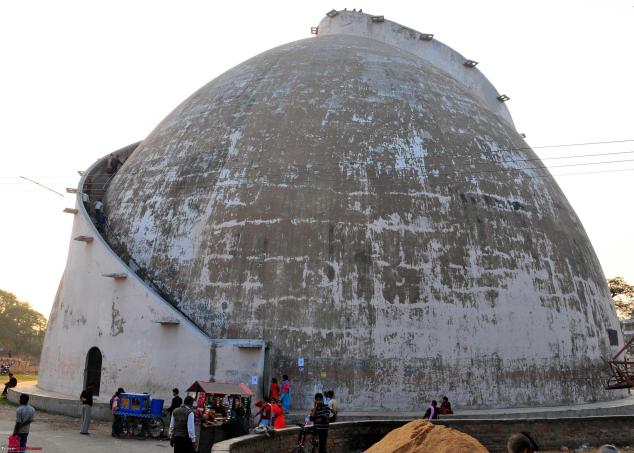From the various impressive artifacts at the museum, we made our way to another archeological site of the city of Patna – Golghar. Golghar is a very famous and striking landmark of the city. Located towards the west is the famous Gandhi maidan of Patna, this site is well known for its historical significance, the view, and the archeological features.
On reaching the site, we could link the name to the design of the building. This famous monument is globular in shape, and thus is named as ‘Golghar’, which means ‘Round House’.
The monument is actually an enormous, unusual shaped granary that was built by the British army in the year 1786, which was constructed to serve as a stockroom during the tough times of food crisis and famine. In the year 1770, a vicious famine hit the city which leads to the death of around 10 million people of the region. On witnessing such calamity, the then Governor-General of India- Warren Hastings, organized to construct this dome-shaped structure that can be used to store grains for the British. The credit of construction is given to Captain John Garstin, who was an engineer in the raising British East India Company.
We were amazed at the construction of the edifice which accounts for the base to be125 meters in width having thick walls of 3.6 meters.
There were dual spiral stairways on each side, each having 145 steps. This was designed so as to facilitate workers to climb up from one side of stairs, and move down from the other. We also moved up the stairs that winds around the Golghar, leading to its top. It was certainly a ‘dome with the view’ as it offered a beautiful panoramic outlook of the city with the flowing Ganges. I took numerous photographs of the scenic beauty of the place. No doubt, this site is so popular amongst tourists.
Golghar was built with an immense storage capacity of about 140000 tones of grains, which can suffice thousands of people. But, the granary could never be filled to its maximum capacity as its doors were designed to open from inside. Due to this architectural glitch, it was never filled to its maximum.

